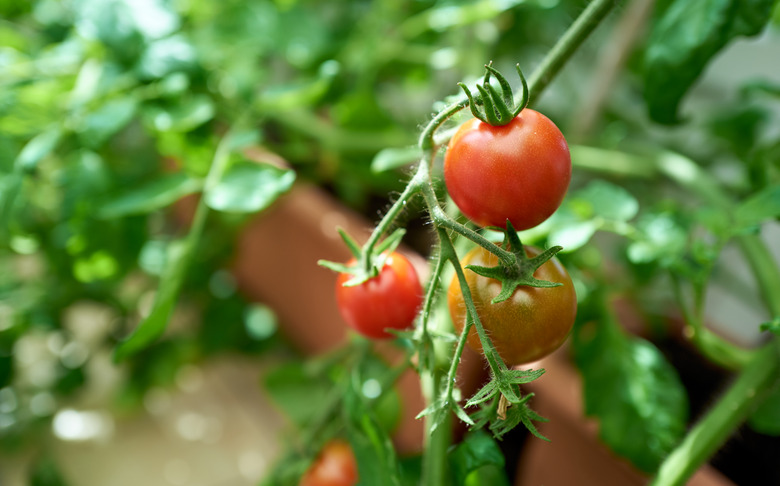How To Repair Overwatered Tomato Plants
We may receive a commission on purchases made from links.
Unfortunately, both overwatering and underwatering tomato plants (Solanum lycopersicum, USDA zones 10-11) present similar symptoms — wilting, yellow leaves and stems and bumps or lesions on lower stems or the base of the plant. Fortunately, deciding how to repair overwatered tomato plants is straightforward once you know the issue at hand.
If the soil is still dry 2 to 3 inches below the surface, the plant is underwatered. If the soil feels damp and spongy or there is standing water on the surface an hour or more after watering, the plant is overwatered.
Treating the Problem
Treating the
Problem
The solution to overwatering tomatoes has two basic steps: drying the roots and soil and then replanting. These solutions are applicable to both indoor and outdoor tomato plants.
You will first need to dig up the tomato plant, being careful not to damage the root ball. Remove residual dirt from the roots and place the plant on top of some clean, dry newspaper in an area with good airflow. This removal will allow both the roots and the soil under the plant to dry out.
Minimal exposure to sunlight can be helpful but do not leave the plant unattended, as too much UV exposure will kill the roots. If you see any roots that are obviously moldy or rotten, cut them off with a sharp, clean set of pruning shears.
Replanting Overwatered Tomato Plants
Replanting Overwatered Tomato Plants
As the soil and roots dry, treat the garden plot so it is ready to receive your refreshed plant. If you are using a pot, use a potting mix with a good blend of materials so the soil does not become too compacted. Well-draining garden soil or potting medium will help regulate aeration of the soil and prevent rot. If you are planting outdoors, reevaluate drainage and placement, and consider planting tomatoes in raised beds.
Once your garden site is ready and your plant is dry and clean, it is time to replant your tomatoes. Consider adding a layer of mulch to help retain moisture in the soil and water less frequently. Remember to regularly check the moisture level of the soil.
Preventing Recurrence of Overwatering
Preventing
Recurrence of Overwatering
If your tomato plants are outdoors, consider acquiring plastic sheeting to gently cover them in heavy rain. Having a trellis in one corner of your garden could help to secure the cover, but it is not strictly necessary.
Some gardeners advocate the application of a commercial product that contains hydrogen peroxide to cure root rot and prevent mold. While hydrogen peroxide is a fungicide, if the solution is too concentrated, it may harm the plant. This is why it's best to use a commercial product that contains this ingredient instead of using pure hydrogen peroxide, which may be in your medicine cabinet.
However, it is not a universal cure-all. Each plant has its own sensitivity, and the best solution for overwatering is monitoring the moisture level of the soil and taking corrective action. Tomatoes are very persnickety and will require careful attention throughout their life span to ensure proper growth and prolific fruiting.
